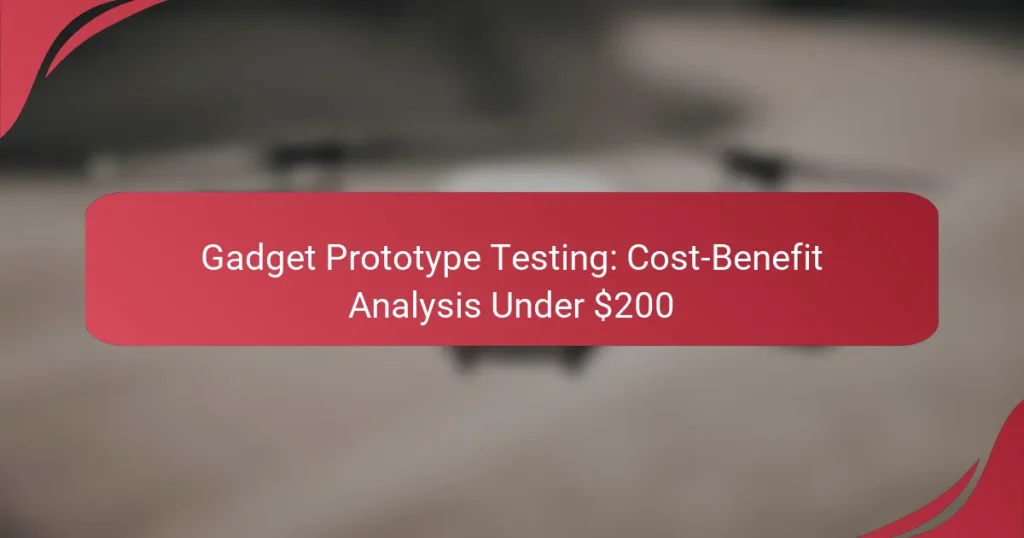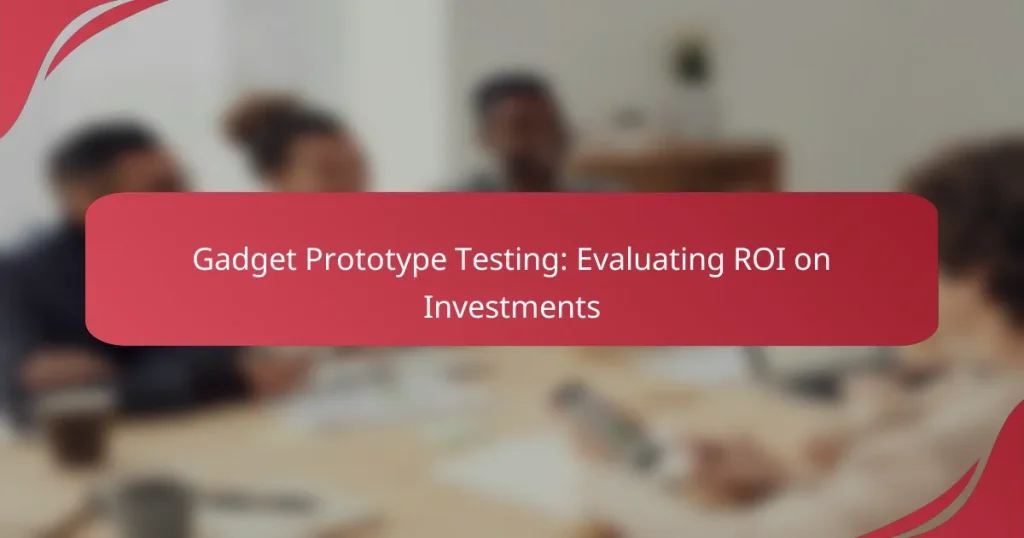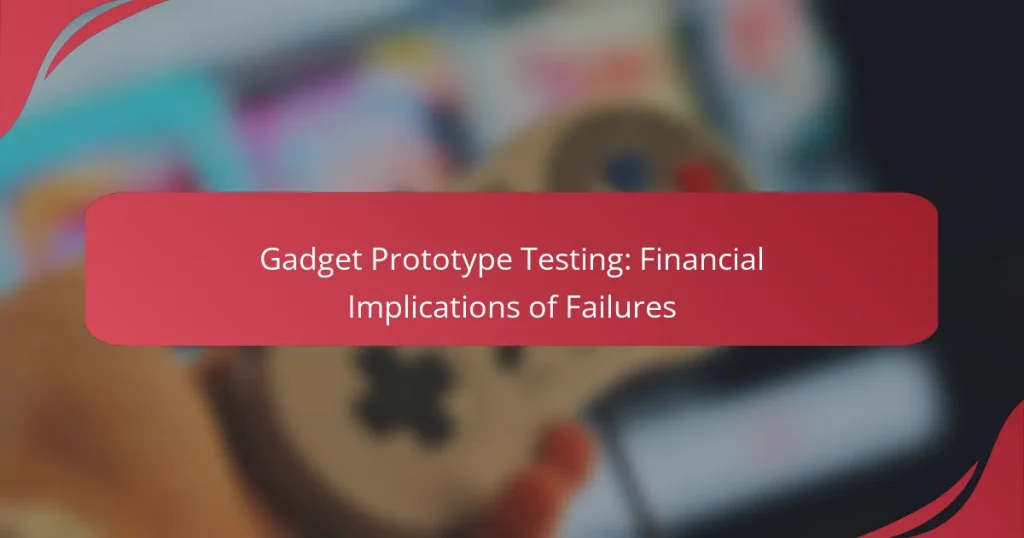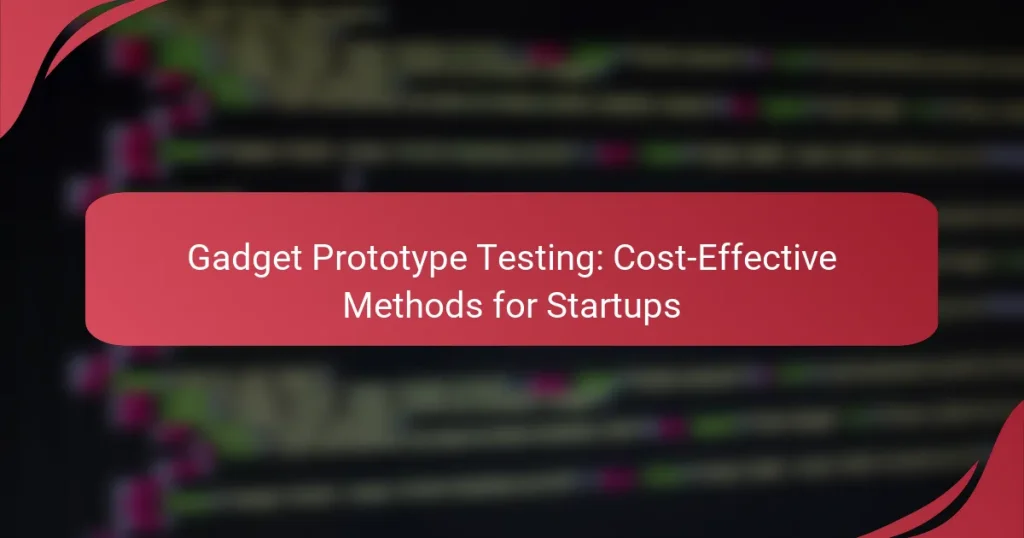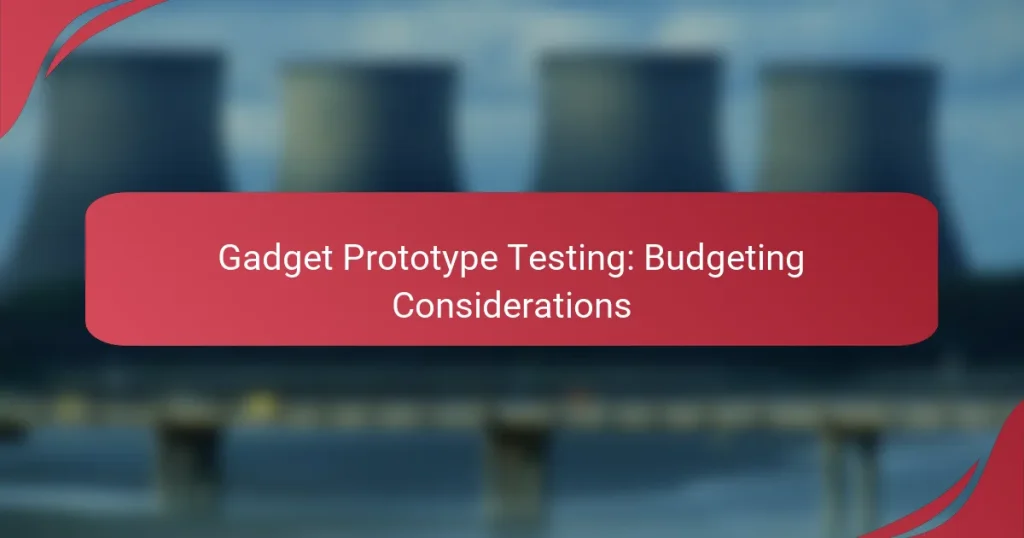Cost-benefit analysis of prototypes is essential for evaluating the financial implications of product development. By assessing the costs associated with materials, labor, and time against the advantages of user feedback and design refinement, teams can make informed decisions. This analysis not only aids in budgeting but also helps identify potential issues early in the development process, ensuring a more efficient pathway to full-scale production.
Gadget Prototype Testing: Evaluating ROI on Investments
Gadget Prototype Testing: Financial Implications of Failures
Gadget Prototype Testing: Cost-Effective Methods for Startups
Gadget Prototype Testing: Budgeting Considerations
Gadget Prototype Development: Cost Comparisons Across Industries
What are the costs associated with prototypes?
The costs associated with prototypes can vary significantly based on materials, labor, time investment, and opportunity costs. Understanding these expenses is crucial for effective budgeting and decision-making in product development.
Material costs
Material costs refer to the expenses incurred for the raw materials used in creating a prototype. These can range from low-cost options like cardboard or plastic to high-end materials such as metals or specialized composites, depending on the prototype’s purpose.
For instance, a simple product prototype might require materials costing anywhere from a few dollars to several hundred dollars, while more complex prototypes can exceed thousands. It’s essential to select materials that balance cost with the fidelity needed for testing.
Labor costs
Labor costs encompass the wages paid to individuals involved in the prototype’s design and construction. This can include engineers, designers, and technicians, and their rates may vary based on expertise and location.
In general, labor costs can account for a significant portion of the overall prototype budget, often ranging from 20% to 50% of total expenses. Efficient project management and clear communication can help minimize these costs.
Time investment
Time investment refers to the duration required to develop a prototype, which directly impacts overall costs. The complexity of the design and the number of iterations needed can extend the timeline significantly.
Typically, a prototype can take anywhere from a few days to several weeks to complete. Planning and setting realistic timelines are crucial to avoid unnecessary delays and associated costs.
Opportunity costs
Opportunity costs represent the potential benefits lost when resources are allocated to prototype development instead of other projects. This can include lost revenue from delayed product launches or the inability to pursue alternative innovations.
To mitigate opportunity costs, companies should evaluate the potential return on investment for each prototype and prioritize projects that align with strategic goals. Regularly assessing the value of ongoing prototypes can help redirect resources more effectively.
What benefits do prototypes provide?
Prototypes offer significant advantages by allowing teams to visualize concepts, gather user feedback, and refine designs before full-scale production. They serve as tangible representations of ideas, helping to identify potential issues early in the development process.
Early user feedback
Prototypes enable early user feedback, which is crucial for understanding how real users interact with a product. By presenting a prototype to potential users, teams can gather insights on usability, functionality, and overall appeal. This feedback can guide necessary adjustments before significant resources are committed to development.
For effective user testing, consider using low-fidelity prototypes for initial feedback sessions. These can be simple sketches or wireframes that allow users to express their thoughts without being influenced by polished designs.
Risk mitigation
Prototyping helps mitigate risks associated with product development by identifying flaws and misunderstandings early. By testing a prototype, teams can uncover design or functionality issues that may not be apparent in theoretical discussions. Addressing these risks upfront can save time and money in the long run.
To maximize risk mitigation, involve a diverse group of stakeholders in the prototyping phase. This includes not only designers and developers but also marketing and sales teams who can provide different perspectives on potential market challenges.
Design validation
Design validation through prototypes ensures that the final product meets user needs and expectations. By iterating on designs based on user feedback, teams can refine their concepts and confirm that they align with user requirements. This process can significantly enhance user satisfaction and product success.
Consider using a combination of high-fidelity prototypes and interactive mockups for design validation. These tools allow users to experience a more realistic version of the product, leading to more accurate feedback and informed design decisions.
How to conduct a cost-benefit analysis for prototypes?
Conducting a cost-benefit analysis for prototypes involves systematically evaluating the expected costs against the anticipated benefits to determine the overall value of the prototype. This process helps in making informed decisions about whether to proceed with development or adjustments.
Identify costs and benefits
Start by listing all potential costs associated with the prototype, including materials, labor, and overhead. Additionally, consider indirect costs such as delays and opportunity costs. On the benefits side, identify expected gains like increased sales, improved efficiency, or enhanced customer satisfaction.
For example, if a prototype requires $5,000 in materials and labor but is expected to generate $15,000 in additional revenue, the initial analysis shows a positive outlook. Documenting these factors clearly will aid in later stages of the analysis.
Quantify financial impacts
Once costs and benefits are identified, assign monetary values to each item. Use estimates based on market research or historical data to ensure accuracy. For instance, if a benefit is projected to save 20 hours of labor per month, calculate the financial equivalent based on average hourly wages.
Consider using a simple formula: Net Benefit = Total Benefits – Total Costs. This will help in determining the financial viability of the prototype. A positive net benefit indicates a favorable outcome, while a negative one suggests reconsideration.
Evaluate qualitative factors
Not all benefits and costs are easily quantifiable. Assess qualitative factors such as brand reputation, customer loyalty, and employee morale. These elements can significantly influence the overall success of the prototype but may not have direct financial metrics.
For example, a prototype that enhances user experience could lead to long-term customer retention, which is invaluable despite being hard to quantify. Weigh these qualitative aspects alongside the quantitative data to form a holistic view of the prototype’s potential impact.
What factors influence prototype costs in the US?
Prototype costs in the US are influenced by several key factors, including material availability, labor market conditions, and the technology used in the prototyping process. Understanding these elements can help businesses manage expenses effectively and optimize their prototype development strategies.
Material availability
The availability of materials directly impacts the cost of prototypes. When materials are scarce, prices tend to rise, which can significantly increase overall expenses. For instance, if a specific type of plastic or metal is in high demand, sourcing it may require higher budgets or longer lead times.
To mitigate costs, consider using alternative materials that are more readily available. This can not only reduce expenses but also lead to innovative solutions that may enhance the prototype’s functionality.
Labor market conditions
Labor market conditions play a crucial role in determining prototype costs. In a tight labor market, skilled workers may command higher wages, which can elevate the overall cost of prototyping. Conversely, in a more competitive labor market, businesses may find it easier to hire skilled labor at lower rates.
To manage labor costs, consider outsourcing certain tasks to regions with lower wage expectations or investing in training for existing employees to enhance their skills. This can lead to better efficiency and reduced reliance on external labor.
Technology used
The technology employed in prototyping can significantly affect costs. Advanced technologies like 3D printing or CNC machining may require higher initial investments but can lead to faster production times and reduced material waste. Evaluating the trade-offs between traditional and modern methods is essential.
When selecting technology, assess both the short-term costs and long-term benefits. Investing in the right technology can streamline processes and ultimately save money over time. Additionally, staying updated on emerging technologies may provide opportunities for cost savings and improved prototype quality.
How to choose the right prototyping method?
Choosing the right prototyping method depends on factors like project goals, budget, and required precision. Evaluate each method’s strengths and weaknesses to align with your specific needs.
3D printing
3D printing is a popular prototyping method that creates three-dimensional objects layer by layer using digital models. It is cost-effective for small runs and allows for complex geometries that traditional methods may not achieve.
Consider using 3D printing when you need rapid prototyping or want to test intricate designs. Materials like PLA and ABS are commonly used, with costs typically ranging from a few dollars to several hundred depending on size and complexity.
CNC machining
CNC machining involves using computer-controlled tools to remove material from a solid block to create prototypes. This method is ideal for high precision and durability, making it suitable for functional parts.
When opting for CNC machining, keep in mind that it may require a higher initial investment and longer lead times compared to 3D printing. Costs can vary widely, often starting in the low hundreds and increasing based on material and complexity.
Handcrafted models
Handcrafted models are built manually, often using materials like wood, foam, or clay. This method allows for high customization and is particularly useful for conceptual designs or artistic prototypes.
While handcrafted models can be time-consuming, they are often less expensive than other methods, especially for one-off designs. However, they may lack the precision and repeatability of 3D printing or CNC machining, making them best suited for initial brainstorming or visual representation.
